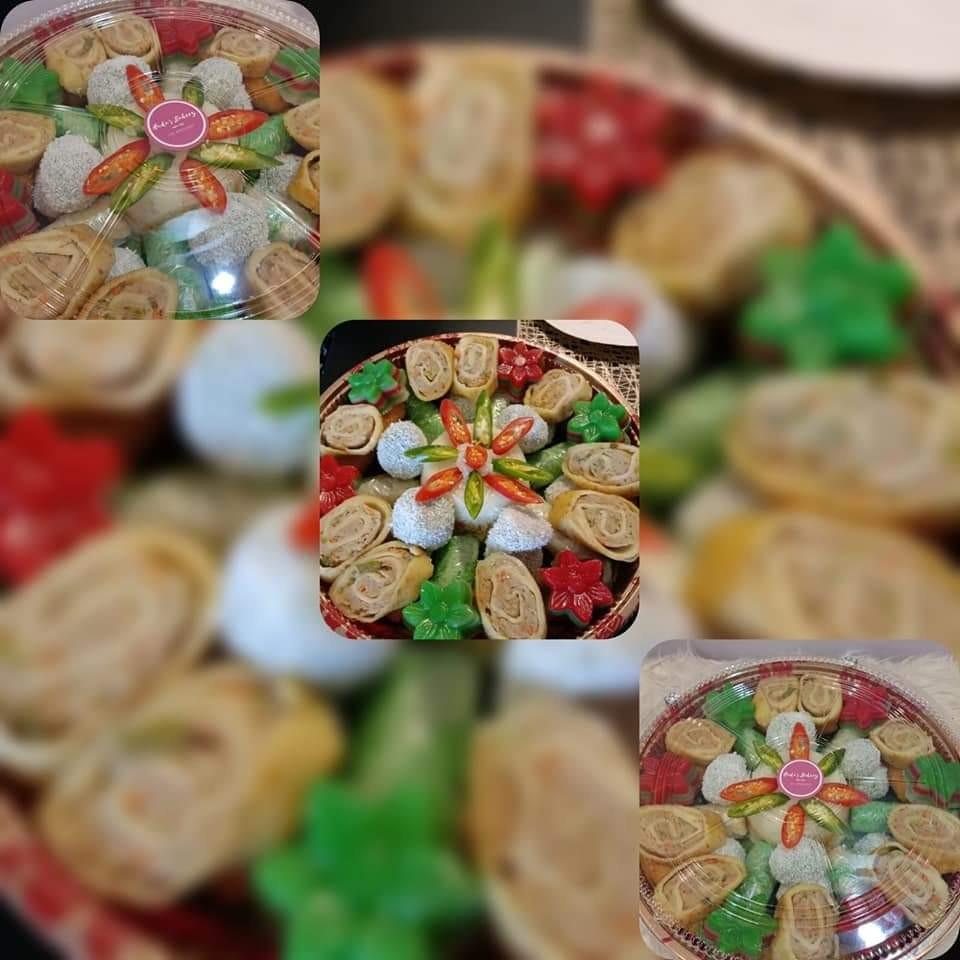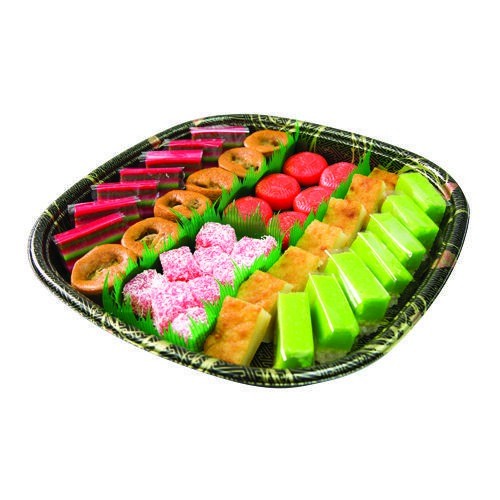Kueh Platter
If you're looking for something sweet and savory to snack on, you might want to try a kueh platter. These beautifully arranged dessert plates are a staple of Southeast Asian cuisine and are perfect for sharing with friends and family.
What Are the Pain Points Related to Kueh Platter?
If you're new to kueh platters, you might be wondering what all the fuss is about. The truth is, there aren't really any pain points associated with kueh platters – they're delicious, visually stunning, and typically made from natural ingredients. However, some people may find that these desserts are too sweet, too filling, or not quite to their taste. It's also important to note that some types of kueh contain gluten or nuts, which can be problematic for people with certain dietary restrictions.
What Is the Target of Kueh Platter?
Despite these potential concerns, kueh platters remain a beloved staple of many Southeast Asian cultures. Their vibrant colors, intricate shapes, and diverse flavors make them a popular choice for celebrations, holidays, and family gatherings.
Summary of Main Points:
Whether you're craving a sweet, indulgent treat or want to experience a new type of cuisine, a kueh platter is a great choice. With its unique blend of sweet and savory flavors, beautiful presentation, and cultural significance, it's no wonder that kueh platters are growing in popularity around the world.
What Is Kueh Platter and Its Target?
For me, kueh platters have been a part of my life for as long as I can remember. Whenever I visit my extended family in Southeast Asia, we always make a point to share a kueh platter together. Each platter is different, featuring a variety of different kueh in different colors, shapes, and flavors. Some of my personal favorites include kueh lapis, which has a delicate layering of rice flour and coconut milk, and kueh dadar, which is filled with gula melaka (palm sugar) and grated coconut.
Kueh platters are typically made with natural ingredients like rice flour, coconut milk, and pandan leaves, and are often sweetened with sugar or palm sugar. They can be shaped into a variety of different forms, from delicate little triangles to round balls and more. No matter their presentation or flavor, kueh platters are always a treat for the senses.
How to Make and Target Kueh Platter?
If you're interested in making your own kueh platter at home, there are plenty of recipes and guides available online. Of course, there's nothing quite like the experience of sharing a kueh platter with loved ones, so I always recommend seeking out a local restaurant or vendor that specializes in Southeast Asian cuisine.
What Makes Kueh Platter So Special?
One of the things that makes kueh platters so special is their sheer variety. With so many different types of kueh to choose from, there's always something new and exciting to try. Many kueh also have their own unique cultural significance – for example, kueh bangkit is a popular Chinese New Year snack, while kueh salat is often served during Ramadan.
What Are the Benefits of Kueh Platter?
In addition to their delicious taste and cultural significance, kueh platters offer a range of other benefits. For one, they're typically made from natural ingredients and don't include any artificial additives or preservatives. They're also a great way to experience new flavors and expand your palate.
What Else Should I Know About Kueh Platter?
When it comes to kueh platters, there's always something new to discover. Whether you're exploring the world of Southeast Asian cuisine or simply looking for a new way to enjoy your favorite desserts, a kueh platter is a great choice. Just be sure to take note of any dietary restrictions or allergies before indulging.
Question and Answer
What is kueh made of?
Kueh is typically made from a combination of rice flour, coconut milk, and natural sweeteners like sugar or palm sugar. Some types of kueh may also include pandan leaves, tapioca flour, or other ingredients.
What is a typical kueh platter made up of?
Kueh platters can vary widely in terms of their contents, but they typically include a variety of different kueh in different shapes, colors, and flavors. Some common types of kueh that may be included on a platter include kueh lapis, kueh dadar, kueh bangkit, and kueh salat.
Is kueh gluten-free?
Not all types of kueh are gluten-free, as some may contain rice flour or wheat flour. However, there are many gluten-free kueh recipes and options available online and in restaurants.
What is the history of kueh platter?
Kueh has a long and rich history in Southeast Asian cuisine, with some types of kueh dating back hundreds or even thousands of years. Many types of kueh have cultural or religious significance, and are often associated with specific holidays or traditions.
Conclusion of Kueh Platter
Whether you're a longtime fan of kueh platters or are just discovering them for the first time, there's no denying their appeal. From their beautiful presentation to their rich cultural significance, kueh platters are a unique and delicious way to experience Southeast Asian cuisine. So why not give one a try today?
Gallery
Nonya Kueh Platter - Harrianns | Food Platters, Platters, Party Platters

Photo Credit by: bing.com / platters
18 Kueh Delivery Options To Enjoy Traditional Handmade Snacks From Home

Photo Credit by: bing.com / kueh jiak nyonya eatbook
Indonesian Kueh Platter, Food & Drinks, Baked Goods On Carousell

Photo Credit by: bing.com / kueh platter indonesian
Deluxe Nyonya Kueh Platter At $36.00 Per Platter | CHOZ

Photo Credit by: bing.com / platter kueh nyonya choz
[60pcs] Chinta Manis Peranakan Premium Kueh Platter Halal - Assorted
Photo Credit by: bing.com / platter manis kueh peranakan 60pcs chinta halal